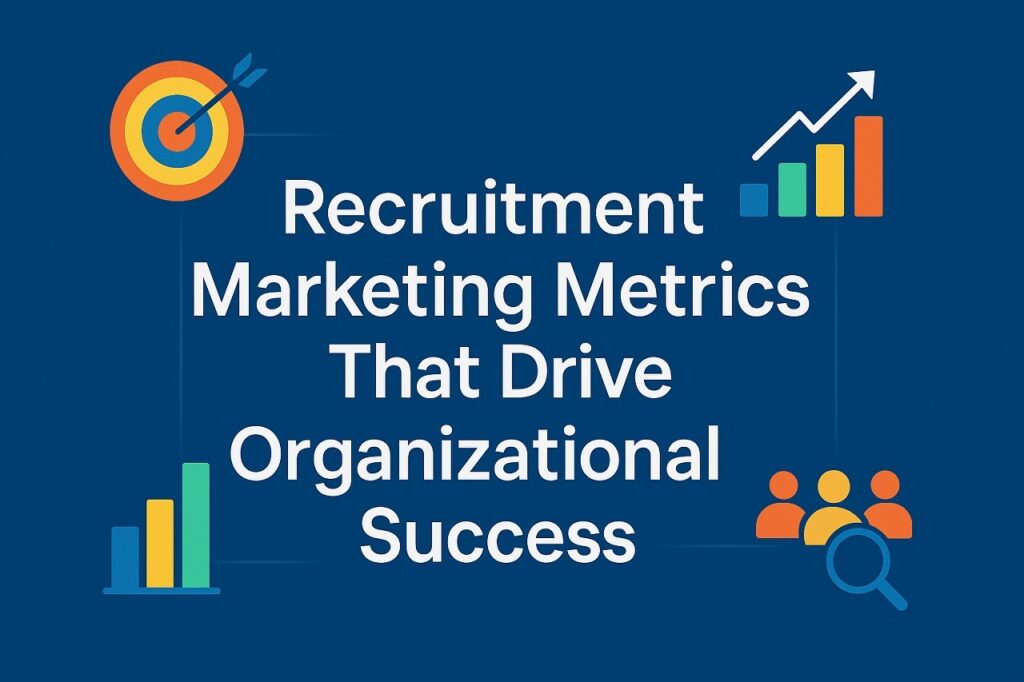Without a doubt, current trends in talent acquisition, recruitment, and onboarding have made hiring easier. However, it comes down to what advertising strategies you use to put your company on the radar. If you are clear on your goals then comes the debate of how much you can spend on advertising? Following current recruitment trends, a well-thought-out job advertising budget is crucial for attracting top talent to your organization. Determining the right budget requires a strategic approach that takes into account various factors, including your hiring goals, industry benchmarks, and the specific channels you plan to use.
In this comprehensive guide, we will walk you through a step-by-step process to calculate your job advertising budget, ensuring that you optimize your investment and maximize your recruitment efforts.
Job Advertising Budget – In a Nutshell
Crafting a successful job advertising budget is pivotal in the ever-evolving recruitment sphere. The process involves a thoughtful strategy, considering essential elements like hiring goals, industry standards, and the chosen advertising platforms. Here, we break down the key steps to help you efficiently calculate your job advertising budget, ensuring optimal investment and heightened recruitment outcomes.
- Start by clearly defining your hiring needs and understanding the skills required.
- Identify your target audience to tailor your messaging effectively.
- Research industry benchmarks to set realistic expectations for costs.
- Establish a Cost-Per-Hire threshold to align with your financial plan.
- Choose suitable advertising channels based on your audience and industry norms.
- Evaluate channel costs and effectiveness to make informed budgeting decisions.
- Calculate your total budget by considering both fixed and variable costs.
- Allocate your budget strategically across chosen channels.
- Constantly monitor and adjust based on real-time performance data.
- Lastly, assess the Return on Investment after the hiring process is complete, refining your strategy for future endeavors.
- This concise guide empowers you to navigate the complexities of job advertising budgets with confidence and efficiency.
Step 1: Define Your Hiring Goals and Objectives
Before diving into budget calculations, it’s essential to clearly define your hiring goals and objectives. Understand the number of positions you need to fill, the skill sets required, and the timeline for recruitment. Identifying these key parameters will lay the foundation for a targeted and effective job advertising strategy.
For companies aiming to attract top talent globally, the importance of defining hiring goals and objectives becomes even more crucial. In this context, understanding the geographical scope of recruitment, language requirements, and cultural considerations is paramount. Clearly outlining the specific skill sets needed for a diverse workforce and establishing a timeline that accommodates different time zones are essential components. This meticulous approach ensures that the job advertising strategy is not only tailored to attract a global pool of candidates but is also aligned with the company’s commitment to diversity and inclusion. By outlining hiring objectives with a global perspective, companies can strategically position themselves to tap into a rich talent pool, fostering innovation and driving organizational success on an international scale.
Step 2: Know Your Target Audience
Understanding your target audience is crucial for crafting a compelling job advertisement and selecting the right channels. Consider factors such as the demographics, job preferences, and online behavior of your ideal candidates. This information will help you tailor your messaging and choose platforms that resonate with your target talent pool.
Here’s how companies can budget advertising knowing their target audience;
- Market Research: Conduct thorough market research to identify the characteristics and preferences of your target audience.
- Demographic Analysis: Analyze demographic data to understand the age, gender, and location of your ideal candidates.
- Behavioral Insights: Study online behavior patterns to determine the platforms and channels frequented by your target audience.
- Competitor Analysis: Evaluate competitors’ advertising strategies to gather insights on effective channels within your industry.
- Customized Messaging: Tailor job advertisements with language and content that resonates with the specific interests and values of your target talent.
- Channel Selection: Choose advertising channels based on the identified preferences and behaviors of your target audience.
- Feedback Loop: Establish a feedback loop to continuously refine advertising strategies based on the response and engagement of your audience.
Step 3: Research Industry Benchmarks
To set realistic expectations and benchmarks, research industry standards for job advertising budgets. Different industries and job markets may have varying norms for recruitment expenditures. Consult relevant reports, surveys, and industry publications to gain insights into the average cost per hire in your sector.
Analyzing reports and surveys provides valuable insights into the average cost per hire within specific sectors. This knowledge not only aids in setting realistic expectations but also empowers organizations to make informed decisions, optimizing their budget allocation for effective recruitment in line with industry standards. Regular updates on industry benchmarks foster adaptability, allowing companies to refine their strategies and stay ahead in the dynamic landscape of talent acquisition.
Step 4: Determine Your Cost-Per-Hire (CPH) Threshold
Calculate your organization’s acceptable Cost-Per-Hire (CPH) threshold – the maximum amount you are willing to spend per new employee. This figure is crucial for ensuring that your job advertising budget aligns with your overall recruitment strategy and financial constraints.
To determine the Cost-Per-Hire (CPH) threshold, a company can assess its budgetary constraints, considering factors like available funds, revenue, and recruitment goals. Analyzing historical hiring data, including past advertising costs and successful hires, aids in setting a realistic CPH threshold that aligns with the organization’s financial objectives and recruitment strategy.
Step 5: Identify Suitable Advertising Channels
Evaluate the most effective advertising channels for reaching your target audience. Consider a mix of online and offline platforms, including job boards, social media, industry-specific websites, and traditional print media. Each channel may come with different costs and reach, so choose those that align with your recruitment goals and budget.
Here’s a list of top advertising channels;
- Programmatic Job Advertising Platform: Leverage automated platforms for targeted job placements.
- Social Media: Utilize platforms like LinkedIn, Facebook, and Twitter for wide-reaching and targeted campaigns.
- Job Boards: Post openings on popular job boards like Indeed, Glassdoor, and Monster.
- Industry-Specific Websites: Advertise on websites catering to your specific industry or niche.
- Traditional Print Media: Explore print publications relevant to your audience for a diverse reach.
- Networking Events: Attend industry events and job fairs to connect with potential candidates.
Step 6: Assess Channel Costs and Effectiveness
Once you’ve identified potential advertising channels, research their costs and effectiveness. Many online platforms offer various pricing models, such as pay-per-click (PPC) or pay-per-posting. Assess the historical performance of these channels by reviewing analytics and case studies to gauge their effectiveness in attracting qualified candidates.
When evaluating channel costs and effectiveness, a Programmatic Job Advertising Platform stands out as a top choice. Offering a data-driven approach, it optimizes costs by targeting ads to the most relevant audiences. With its ability to adjust in real-time based on performance analytics, programmatic advertising ensures efficient spending and maximizes the chances of attracting qualified candidates, making it a cost-effective and results-driven channel for recruitment efforts.
Step 7: Calculate the Total Budget
With a clear understanding of your hiring goals, target audience, industry benchmarks, CPH threshold, and chosen advertising channels, you can now calculate your total job advertising budget. Consider both fixed costs (such as posting fees) and variable costs (such as PPC expenses) to arrive at a comprehensive budget that aligns with your recruitment strategy.
- Compile Costs: Sum up fixed costs like posting fees and variable costs such as pay-per-click expenses.
- Factor in CPH Threshold: Ensure the total budget adheres to the organization’s predefined Cost-Per-Hire threshold.
- Consider Historical Data: Refer to past advertising expenses and performance data for realistic budget projections.
- Account for Channel Effectiveness: Allocate budget based on the historical effectiveness of chosen advertising channels.
- Regularly Update: Periodically revisit and update the budget to reflect changing recruitment needs and market dynamics.
Step 8: Allocate Budget Across Channels
Distribute your budget strategically across the selected advertising channels based on their effectiveness, reach, and cost. Allocate a higher percentage to channels that have historically yielded successful hires and adjust accordingly as you monitor the performance of each platform.
Leading corporations strategically allocate their advertising budget by prioritizing channels that align with their brand and yield optimal results. For instance, tech giants like Apple often allocate a significant portion of their budget to targeted digital advertising through platforms like Google Ads. This approach allows them to maximize their reach, engagement, and overall effectiveness in attracting top talent within the competitive tech industry.
Step 9: Monitor and Adjust
Continuous monitoring is key to optimizing your job advertising budget. Track the performance of each channel in real-time, analyzing metrics such as click-through rates, application conversion rates, and overall cost-effectiveness. Based on the data, be prepared to adjust your budget allocation to prioritize the most successful channels.
Step 10: Evaluate Return on Investment (ROI)
After your recruitment campaign concludes, evaluate the ROI by comparing the actual cost of hiring to the expected cost. Analyze the quality of hires, time-to-fill, and other relevant metrics to determine the overall success of your job advertising strategy. This evaluation will inform future budgeting decisions and help refine your recruitment approach.
- Cost-Per-Hire (CPH): Calculate the total cost divided by the number of hires to determine the CPH.
- Time-to-Fill: Assess the time it takes to fill a position from the start of the recruitment campaign.
- Quality of Hires: Measure the performance and fit of new hires within the organization.
- Conversion Rates: Analyze the conversion of applicants to hires to gauge the effectiveness of the recruitment process.
- Feedback Surveys: Gather feedback from new hires and recruitment teams to identify areas for improvement and success.
Conclusion
Creating an effective job advertising budget is a strategic process that requires careful consideration of various factors. By following this step-by-step guide, you can ensure that your recruitment efforts are not only cost-effective but also aligned with your organization’s goals. Regularly reassess and adjust your budget based on performance data to continuously optimize your job advertising strategy in an ever-evolving job market.
Sourcing Square, a programmatic job advertising platform, streamlines job promotion by utilizing data-driven strategies. It precisely targets relevant audiences, optimizes costs through real-time adjustments, and enhances job visibility, ensuring effective recruitment for businesses.




